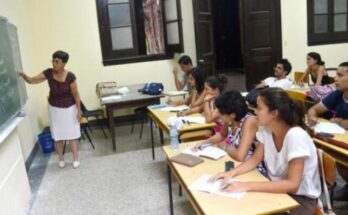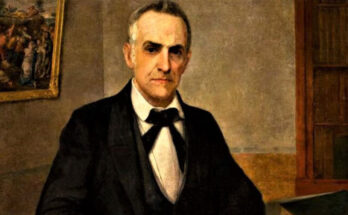Florida, Mar. 14 – Since 1990, every March 14 is celebrated in Cuba the Press Day as an act of remembrance to the first publication of the newspaper Patria, the organ of the Cuban Revolutionary Party and maximum expression of the fruitful journalistic work of José Martí Pérez.
It was in 1892, in the city of New York, when the first edition of Patria was published, a masterpiece of Martí’s journalism that began in 1969 with the publication of El Diablo Cojuelo and La Patria Libre.
Founded thanks to the economic contribution of the emigrant tobacco growers, Patria’s main objectives were to combat the ideological currents that were enemies of the Revolution and the total independence of Cuba and Puerto Rico from Spanish rule through armed struggle, to spread the work of independence among Cubans and Puerto Ricans, and to contribute to the achievement of unity.
Patria was born when José Martí was one of the best known journalists in Latin America for his work in important publications such as El Partido Liberal of Mexico and La Nación of Buenos Aires.
Its first edition came out with several articles written by Martí, the main note is the reproduction of the Bases of the Cuban Revolutionary Party; also on the front page there is an article with his signature titled Our ideas, where he expresses that Patria is born «to gather and love, and to live in the passion of truth».
On page three Martí reasons, in an article entitled To our press, about the role that corresponds to it in the battle for independence and sovereignty, and, in that sense, he writes: «This newspaper is born, at the hour of danger, to watch over freedom, to contribute to make its forces invincible through union, and to prevent the enemy from defeating us again because of our disorder».
And then he defines the character and essence of this printed work, when he states «But the press is different when the enemy is in front of us. Then, in a low voice, the signal is passed on. What the enemy has to hear is nothing more than the voice of attack. That is Patria in the press. It is a soldier.»
The newspaper had four pages with an equal number of columns, it was distributed mainly by mail; it appeared, initially, every Saturday, at five cents, although next to the price it was pointed out that the products of the newspaper were destined to its maintenance, and it is known that those who contributed financially for the appearance and support of this publication were the tobacco growers of Tampa and Key West, and Cuban and Puerto Rican intellectuals who lived in New York.
José Martí was the first director of Patria, and Gonzalo de Quesada y Aróstegui, the Puerto Rican Sotero Figueroa, and the Cuban intellectuals Benjamín Guerra, Manuel Sanguily, Francisco de Paula Coronado, Rafael Serra, Diego Vicente Tejera and Bonifacio Byrne participated in the editorial staff; and among his collaborators were Tomás Estrada Palma, Manuel de la Cruz and Federico Sánchez.
After the appearance of Patria, Martí’s cherished dream, tailor-made for his political and literary genius, all Cubans who loved Cuba saw it as their newspaper, the organ that from the very first issue spoke to them of the union and the necessary war.
At the death of the Apostle of the Cuban Independence the newspaper dedicated an edition to his figure, intellectuals of great value that were then in New York wrote their impressions and memories about that transcendental figure of the history of Cuba and America; in his place Enrique José Varona, philosopher, literary of high prestige and educator, who from the beginning of the struggle left the Island and offered his services to the delegation of the Cuban Revolutionary Party, took the direction.
The last issue of Patria was number 522, dated December 31, 1898.





